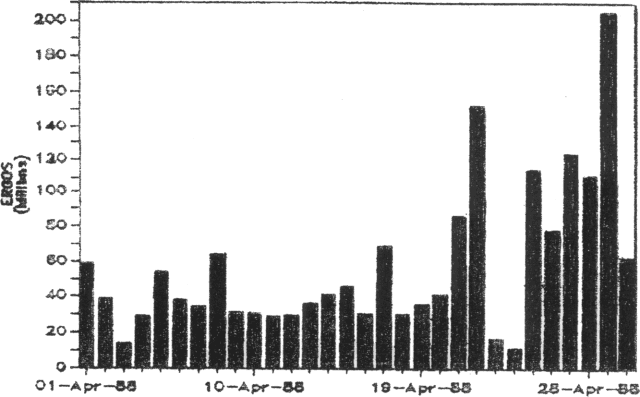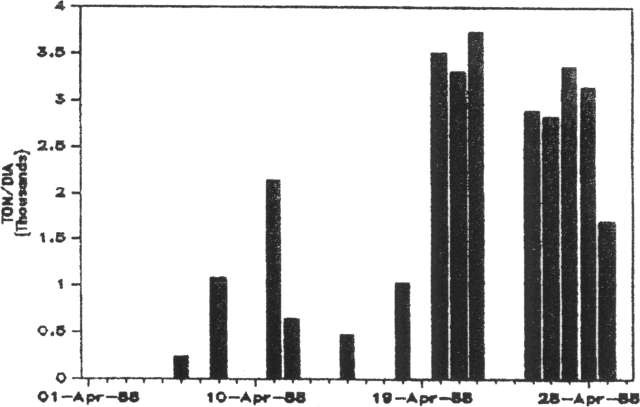Report on Nevado del Ruiz (Colombia) — April 1988
Scientific Event Alert Network Bulletin, vol. 13, no. 4 (April 1988)
Managing Editor: Lindsay McClelland.
Nevado del Ruiz (Colombia) More frequent ash emission; increased seismicity
Please cite this report as:
Global Volcanism Program, 1988. Report on Nevado del Ruiz (Colombia) (McClelland, L., ed.). Scientific Event Alert Network Bulletin, 13:4. Smithsonian Institution. https://doi.org/10.5479/si.GVP.SEAN198804-351020
Nevado del Ruiz
Colombia
4.892°N, 75.324°W; summit elev. 5279 m
All times are local (unless otherwise noted)
Small ash emission episodes that lasted ~2-5 minutes were frequent in the second half of April, as seismicity increased significantly. Ash fell ~10 km NW and SW of the summit crater, troubling cattle on nearby farms.
The number of high-frequency events increased significantly during the last six days of April, reaching a total of 2,683 for the month. The number of low-frequency shocks also increased in April, totaling 2,303. Epicenters were dominantly aligned NE-SW in two principal zones; one beneath the summit (Arenas Crater) at 1-5 km depth, the other 3 km to the SW (between Arenas and Nevado del Cisne) at 3-5 km depth. Maximum daily seismic energy release was 2.04 x 108 ergs on 29 April (figure 11), when 338 high-frequency and 247 low-frequency events were recorded. Pulses of tremor that began suddenly and reached high amplitude occurred almost daily, but declined very quickly (after 2-5 minutes). Several of the tremor pulses were associated with small emissions of ash that fell near the crater. SO2, measured by COSPEC, declined at the beginning of April then increased to an average of 3,000 t/d (figure 12), very close to March values. Deformation data continued to show no significant changes.
 |
Figure 11. Daily seismic energy release (in 106 ergs) at Ruiz, April 1988. Courtesy of the Observatorio Vulcanológico de Colombia. |
 |
Figure 12. Rate of SO2 emission (in 103 t/d) measured by COSPEC at Ruiz, April 1988. Courtesy of the Observatorio Vulcanológico de Colombia. |
Geological Summary. Nevado del Ruiz is a broad, glacier-covered volcano in central Colombia that covers more than 200 km2. Three major edifices, composed of andesitic and dacitic lavas and andesitic pyroclastics, have been constructed since the beginning of the Pleistocene. The modern cone consists of a broad cluster of lava domes built within the caldera of an older edifice. The 1-km-wide, 240-m-deep Arenas crater occupies the summit. The prominent La Olleta pyroclastic cone located on the SW flank may also have been active in historical time. Steep headwalls of massive landslides cut the flanks. Melting of its summit icecap during historical eruptions, which date back to the 16th century, has resulted in devastating lahars, including one in 1985 that was South America's deadliest eruption.
Information Contacts: A. Nieto, A. Acevedo, and E. Parra, INGEOMINAS, Manizales.

